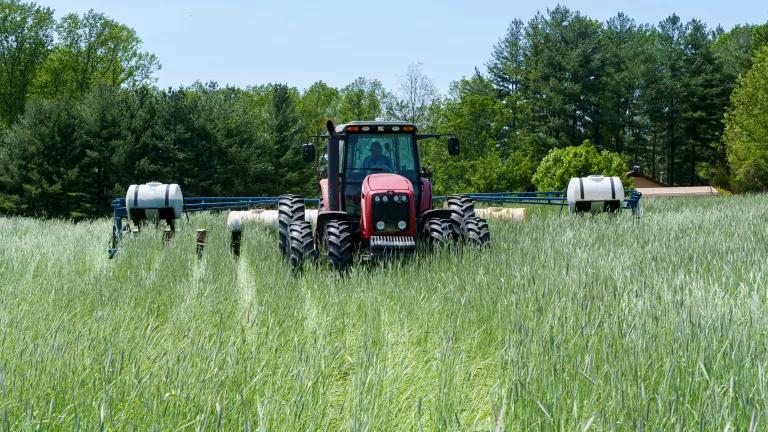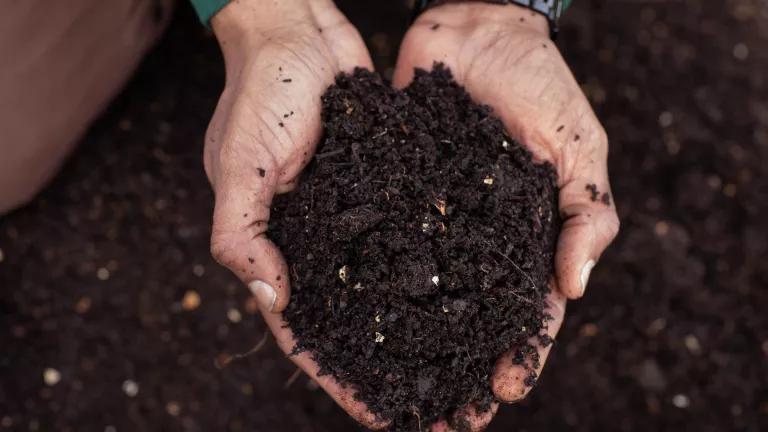Say you have a melon in your fridge. And you find a soft spot on that melon, about the size of a nickel. Do you waste the whole melon? Of course not--you chop it up and throw away only the part that's bad.
Now, suppose you see that melon in the grocery store, with a little soft spot on it. Are you going to buy that melon? Probably not. If you're a store manager, do you want unsellable produce like that out on the floor? No way. So that melon--all 10 pounds of it--gets tossed in the trash. Wasted.
Years ago, a supermarket would have chopped up the good parts of the melon and sold it as cut fruit in the deli department. But not today. Food preparation is done off-site, which allows stores to reduce staff size and labor costs, but also increases waste. Bruised fruit gets thrown away instead of being cut and resold. (Whole Foods, which employs plenty of labor, is the exception to this trend.)
Food waste in supermarkets is a complex issue, with roots not only in how stores conduct business, but also in what we, as customers, have come to expect from our food. Tackling this issue means empowering growers and consumers, finding new business strategies for selling food instead of wasting it, developing new technologies to keep food fresh, and creating consumer-friendly labeling and packaging that helps keep good food out of the trash heap.
Smart In-Store Solutions
Concerns about offering fresh product spurs most stores to pull items off shelves two or three days before the sell-by dates--despite the fact that these dates generally do not indicate food safety. On average, each supermarket throws away about $2,300 worth of food this way every day, according to one industry consultant.
Bargain shelves are one way for stores to make sure food gets to the cash register instead of the dumpster. When I lived in California, I shopped at a grocery store called Berkeley Bowl, where they have a $0.99 bargain shelf for produce that is slightly damaged or nearing expiration. The store estimates it sells $1,500 worth of produce each day off this shelf. An orchard near me in New York sells "utility bags" of apples for about half-price, with apples that are so very slightly damaged that it makes no difference to me. I've not seen this approach in any New York City supermarket.
In the U.K., where the government is running a national campaign to reduce food waste, some major retailers are testing out an ethylene-absorbing strip--ethylene is the gas that some fruits release as they ripen--to prolong the shelf-life of produce. They estimate the strips could save 1.6 million packs of tomatoes, 350,000 packs of avocados, and 40,000 packs of strawberries each year.
Sainsbury, a British supermarket chain, recently introduced labels that encourage consumers to use or freeze food by its use-by date instead of throwing it away, saving an estimated 800,000 metric tons of food each year. The U.K. government recently issued new guidance on "sell by," "best by," and "use by" labeling to help reduce consumer confusion. We could use more labeling guidance on this side of the pond.
New Business Models
Farmer's markets play an important role, too, in reducing food waste and empowering growers, who are beholden to the demands of a few powerful retailers.
"As a retailer, my standard for what is allowable to show to the consumer is so high that perfectly edible produce is never going to make it out of the field," says José Alvarez, the former CEO of Stop and Shop/Giant Landover. "This has a corrupting influence throughout the system."
The nonprofit Feeding America estimates that more than 6 billion pounds of produce goes unharvested or unsold every year. There are many reasons for this, but retailers play a big role because of their demands for physical perfection (which are ultimately driven by us consumers not buying that melon with a spot on it), and because farmers often overplant to ensure they can meet a retailer's requirements--otherwise they risk losing the business.
At a farmers' market, growers can find customers who might be willing to buy the extra food, or the imperfect but delicious apples that would never make it to the grocery store shelf. Some of this extra produce might also make its way to food banks, or even to a new kind of retail store. Grocery Outlet, a $960 million business, sells mostly overruns and closeouts, including fresh produce, in its 148 stores. Doug Rauch, a former president of Trader Joe's, is developing a new store that will source overruns, grocery items near or past expiration, and "seconds" from growers--physically imperfect, but still perfectly tasty and nutritious food. He plans to open a chain of affordable stores in food deserts, where communities lack access to fresh food, starting this winter.
Empowering Growers and Consumers Can Reduce Waste
Retailers wield enormous power in our food system, because they influence consumer behavior on one end, and supplier behavior on the other. But the balance of power might change in the coming years, Alvarez predicts, and a handful of big retailers might no longer have an outsized--and wasteful-- influence on how food is grown and sold in this country. As global demand for food rises, and as the internet and improved shipping technologies give growers access to new markets, growers may no longer have to bow to the demands of a small group of powerful buyers.
Empowered growers, smart retailers, and educated consumers can encourage the building of transparency and trust throughout our food supply chain. Working together, we can reduce food waste and create a safer, healthier food supply for all Americans.
[This post is part of our Wasteland series, featuring people, towns, businesses and industries that are finding innovative ways to cut waste, boost efficiency and save money, time and valuable resources.]



